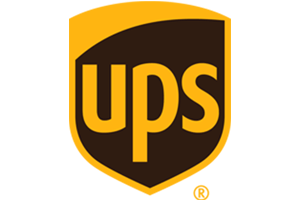 UPS reported net income of $1.02 billion in the first quarter of 2015, up 12.6% from $911 million a year earlier, as executives said they’re making headway in efforts to ensure the company’s growing ecommerce business is more profitable.
UPS reported net income of $1.02 billion in the first quarter of 2015, up 12.6% from $911 million a year earlier, as executives said they’re making headway in efforts to ensure the company’s growing ecommerce business is more profitable.
Domestic package revenue was up 3.8% to $8.48 billion, while international package revenue dipped 5% to $2.97 billion; on a currency-adjusted basis, it increased 2.4%. Overall revenue was up 1.4% to $3.78 billion, and earnings per share increased 14.1% to $1.13.
UPS CEO David Abney told analysts the company has been focused on five key areas of investment, including improvements in capacity and efficiency, expansion into growth markets especially Europe, an industry-specific focus and the One UPS supply chain initiative.
In the category of efficiency gains, Abney said UPS’s investments in hub automation and the ORION route optimization system are on schedule. “In fact, we expect the accelerated deployment of ORION will reduce 100 million miles annually once fully implemented, and we’re on plan to complete 70% of driver routes by the end of this year,” he said.
Making ecommerce a growth and profit center is another area of focus, Abney said. In January, UPS increased its access point location program – which allows consumers to pick up parcels at retail sites – to more than 4,400 UPS stores. In May, it will add retail pickup locations in Boston, San Francisco and Washington DC, in addition to existing sites in Chicago and New York. This will bring the total number of locations to more than 20,000 by the end of the year.
“To strengthen our position as the ecommerce shipper of choice, we are expanding the access point network, our unique network of retail locations that both improves the consumers’ experience and provides better stop economics,” he said. The more consumers adopt the pickup location program, the better for UPS, which incurs greater costs on one- and two-item ecommerce deliveries to residential addresses but gains through consolidated deliveries.
“This unique channel is a key component of our global B2C strategy,” Abney said.
Asked about increases in seasonal peak pricing the company signaled on its last earnings call, intended to mitigate operating costs associated with the massive surge in ecommerce volume, Chief Commercial Officer Alan Gershenhorn said the company is already seeing revenue gains from the change.
“We’ve got a comprehensive strategy in place that’s already begun to increase the revenue from customers that surge during the peak season and then also drive additional operating expenses,” Gershenhorn said. “Price increases again can be generally applied to the residential products and other high-cost areas, but they will vary by customer and those revenue initiatives are already built into the (earnings) guidance.”
Abney also addressed a question about FedEx’s recent acquisition of Dutch carrier TNT, which was lauded by analysts and industry observers, saying his company’s European business is growing rapidly even though its main rival won the prize. UPS’s bid for the company was rebuffed by European antitrust regulators in January 2013, its efforts making the coup easier for FedEx.
“First, I’ll just remind everyone that the FedEx-TNT deal is complex and we expect that regulatory agencies will be as stringent on this deal as they have been on previous deals,” Abney said. “Let’s don’t forget the fact that that we have experienced just great returns from our European markets and we certainly don’t expect that to change.”
Over the last ten years, he said, UPS’s average daily volume on European exports has more than doubled and the company’s five-year capital deployment plan for the continent is about $2 billion. “We have a real good business in Europe and we expect it to continue to grow and we are as excited as we have been at any time about Europe,” Abney said.
Asked about dimensional pricing changes which went into effect this year, departing CFO Kurt Kuehn – who will retired July 1 and be replaced by Corporate Controller and Treasurer Richard Peretz – said it did positively impact first-quarter revenue. UPS’s ground yield was up 3.1% in the quarter, primarily due to the DIM weight change and other revenue management actions.
“But ultimately we are working with a large number of customers to adjust their packaging, that’s the real intent to this,” Kuehn said. “And so the revenue impact will moderate a little over time and the economic benefit of less air in our feeders will come through. So we did see a big benefit in the first quarter and as we work with customers to reduce their costs then that will migrate.”
“The work we are doing with our customers to reduce the size of their packages will probably be an offset to some of the gains we get from contracts expiring and being renewed with stronger DIM weight language,” Gershenhorn said.
